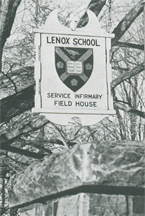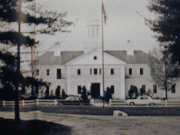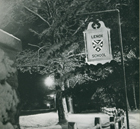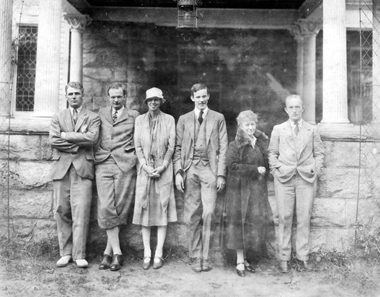By Randy Harris '68
Many are always interested in the financial challenges faced by Shakespeare & Company and their impact on its viability and improvements to the campus and its buildings. To get the latest status, over the Reunion weekend and the following week, I discussed the matter separately with the Artistic Director, and then the General Manager and Managing Director.
As S&Co enters its 35th year and 12th on the Lenox School campus, its leadership feels that they’ve come a long way and are significantly better off than in years past, with last year’s “in the black” status proof of their stability. However, they continually face the problem of not being able to do smart things in the long run due to lack of capital, which is currently used to service the debt. Additionally, returns on investment take time to realize savings (i.e. the new Lawrence Hall self-help kitchen limits the need to hire kitchen staff); gifts don’t come in all at once, as donors often give over several years for tax purposes; and revenues are often out of synch with bills. Therefore, as part of their 35th year they intend to celebrate the Company and its training and education programs and retire as much debt as possible while improving their cash flow and beginning an endowment, through a $6M fundraising campaign.
S&Co’s financial challenges and obligations generally fall into one of four categories. First is the monthly mortgage on the $3.2M loan used to originally purchase the 33-acre property. Next are two promissory notes totaling several million dollars, taken out in 2008 for the Bernstein Center (Sports Center) and due in 2015 (paid through 2012). The money was required to fix its roof, other infrastructure, and remodel it into a world-class facility with state-of-the-art rehearsal rooms and workshop areas, which unfortunately was done during a down economy when revenues were low. Then come the operational costs for salaries, royalties, upkeep and maintenance; and finally, capital costs required for remodeling/improving existing buildings and building new ones.
Current revenues are sufficient to meet monthly mortgage payments on the campus property of $250K-$300K. The Bernstein Center debt will be met by the fundraising campaign and a donation from the estate of Ms. Bernstein that will eliminate the debt and create an endowment for maintenance of the Center, thus keeping the remaining monthly payments on the campus property manageable. In regards to operational expenses, they are being met, but as mentioned, they are often out of synch with revenues. The largest revenues are generated from the summer productions, while the largest expenses occur in the spring when royalties to play-writes and actor salaries are due. Added to these are staff salaries, and maintenance costs both of which fluctuate and the cost to rent three off-campus houses for up to 38 staff. There are now 28 permanent staff members, the result of a one-third reduction several years ago, with contract employees swelling the number to 75 in the fall, 50 in the winter and 200+ in the summer. The $500K cash reserve obtained from the fundraising effort will ensure that all bills are paid in a timely manner.
Unfortunately, that leaves very little money for capital projects, which must be raised primarily through other means. These projects range from long-term money makers like double-pane windows in Lawrence Hall to reduce heating costs; to remodeling South Cottage (improved corridors will allow access to 9 bedrooms at a cost of 150K?) that would negate the need to rent several off-campus houses; to refurbishing St. Martins and other buildings. The only capital project this year was Elayne’s Corner outside the Bernstein Center’s main entrance celebrating Ms. Bernstein’s life. There are three likely sources of income for these capital improvements in addition to purely fundraising endeavors. The first, which is being actively pursued, is renting out existing rehearsal facilities. The three Bernstein Center rehearsal rooms are routinely in demand, while the upper floor of Founders’ Theater is currently rented out to a Yoga company.
Second, S&Co continues to seek a long-term renter for the northern half (Olympic size hockey rink) of the Bernstein Center. Currently only suitable for storage, it lacks a loading dock or existing roads for truck access. It would need heat, restrooms and handicap access to achieve full commercial real estate status. In the past, several film companies have expressed a desire to create studios there, but the bad economic times and the fact that Lenox is on the border between Boston and New York construction-related unions killed these initiatives, some companies seeking non-union States. There was also an inquiry from an indoor soccer team for use as a soccer facility.
Fourth, what S&Co and its campus do offer is existing buildings and the square footage to expand either through improving these buildings or replacing them with new ones. S&Co is seeking a non-profit joint-tenant, primarily among educational organizations since the property is zoned for non-profit use, who might want to invest in a location for the practical application of its drama school. Included in this could be the refurbishment of St. Martins Hall, though S&Co remains open to discuss other uses for it as well.
 Friday, November 30, 2012 at 11:23AM
Friday, November 30, 2012 at 11:23AM 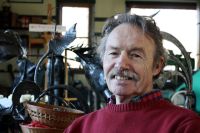 Artists speak through their art using many different languages.
Artists speak through their art using many different languages.
